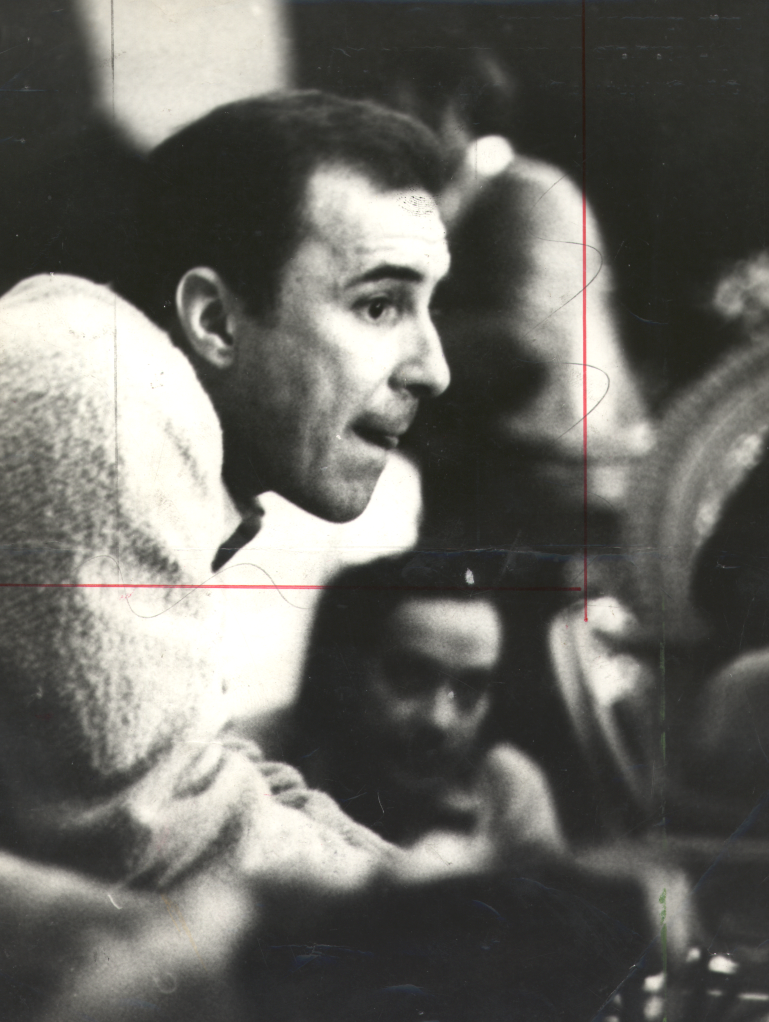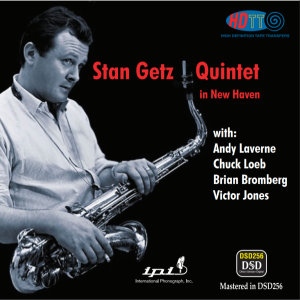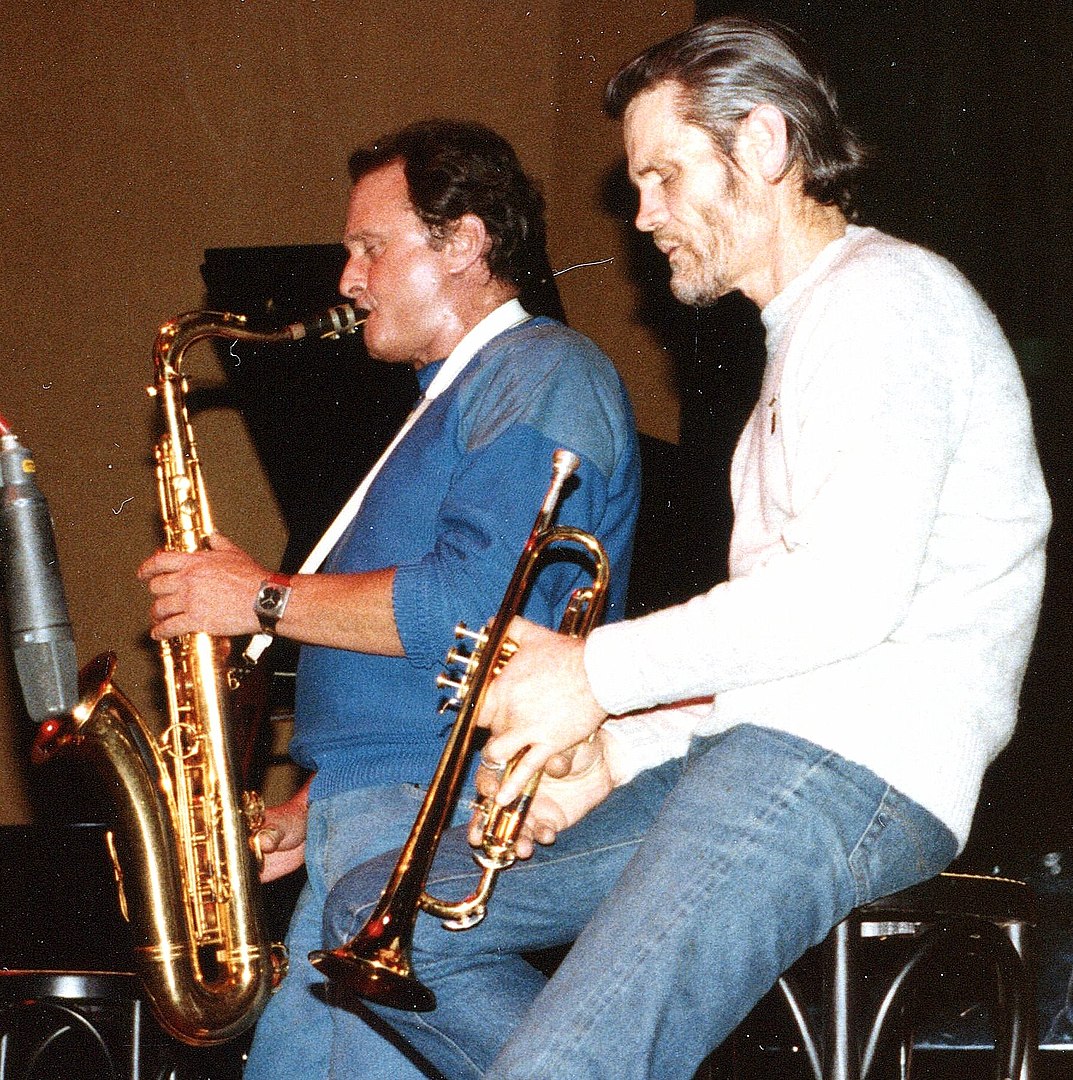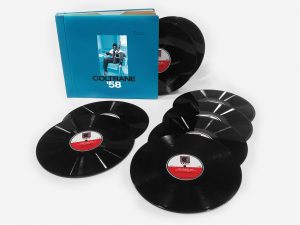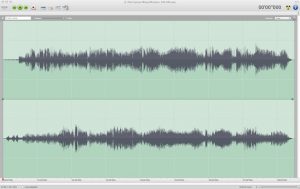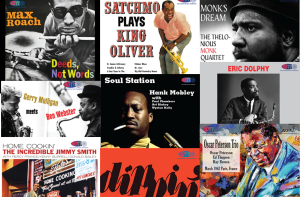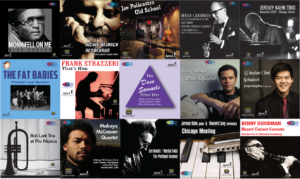Does this album need any further introduction than it's title, Getz/Gilberto? Well, when it is reissued in the finest digital sound quality I've yet heard it deserves a bit of celebration! And HDTT deserves kudos for the exceptionally good work accomplished here. I have multiple digital reissues of this album, but this is now at the top of my playlist.
Getz/Gilberto, Stan Getz, João Gilberto, featuring Antonia Carlos Jobim. And with Tommy Williams, Milton Banana, Astrud Gilberto. HDTT 1963, 2022 (Pure DSD256) HERE
Oh, yes! Bob Witrak knocks this release out of the park. It is a terrific transfer in excellent sound: very detailed, present and alive, but with a beautiful rounded naturalness to the timbre of the instruments and voices.
When "The Girl from Ipanema" opens with João's solo voice, it's like he's right here with me, with resolution, detail and depth of tone. The same can be said for the support from double bass and percussion. Then, when it's time for Astrud to take over, she sounds as present and alive as I've ever heard from various issues of this album. Such a lovely voice, given such excellent reproduction in this release. Here, in this transfer, is the delicacy and articulation that other releases so often miss.
I've made a quick comparison to several other digital reissues of this album that I have in my library and most of them sacrifice the beautiful analog naturalness of timbre in this release on the altar of detail for the sake of hyper-detail. And often they bring out that very typical hardness that plagues so many digital releases. Astrud's voice is simply not the beautiful natural-sounding instrument that one hears in this HDTT Pure DSD256 transfer. The same can be said for the tone of Stan Getz's sax.
Each time I go back to the HDTT Pure DSD256 my ears simply relax into enjoyment of the very analogue naturalness of the timbre of the instruments and voices. This is a superb transfer by HDTT. I don't think anyone will be disappointed if you can hear it in DSD256.
By the time this album was recorded in March 1963, Stan Getz had already partnered with Charlie Byrd in releasing Jazz Samba (April 1962), an album that that had buoyed American interest in the bossa nova movement.
In the spring of 1961, guitarist Charlie Byrd was sent on a diplomatic tour of South America by the US Government with the idea that exporting culture could be a positive political tool. In this case, however, it was more a case of what Byrd brought back to America: Jazz Samba. Upon his return, Byrd met Stan Getz at the Showboat Lounge in Washington DC and later, at his home, played him some bossa nova records by João Gilberto and Antonio Carlos Jobim that he had bought in Brazil. In October 1961 Getz and Byrd did some initial jazz samba recordings, but these remained unissued. The tracks for Jazz Samba were recorded in February 1962 and the album released in April. In the middle of September it entered Billboard's pop album chart and on March 9, 1963, it made No. 1; and while it spent just a week at the top it spent a total of 70 weeks on the bestseller list, this truly was a groundbreaking record.
So why do I focus on Getz/Gilberto? Because this album included Brazilian artists playing their music, accompanied by Getz. In November 1962, several important Brazilian musicians, including João Gilberto, Oscar Castro-Neves, Luis Bonfá and Sergio Mendes, intrigued perhaps by the interest Brazilian music was receiving in the U.S., came to New York City to play a concert at Carnegie Hall.
The success of Jazz Samba, and then additional performances of samba infused music by Dizzy Gillespie, Cal Tjader, Ella Fitzgerald and other artists had bossa nova in the air. The jazz marketplace had been flooded with bossa nova albums, and the overexposure was beginning to make the music seem like a fad.
The release of Getz/Gilberto trumped Jazz Samba by bringing two of bossa nova's greatest innovators—guitarist/singer João Gilberto and composer/pianist Antonio Carlos Jobim—to New York to record with Stan Getz. The results were magic. Getz/Gilberto made bossa nova a permanent part of the jazz landscape not just with its unassailable beauty, but with one of the biggest smash hit singles in jazz history: "The Girl From Ipanema"—a Jobim classic sung by João's wife, Astrud Gilberto, who had never performed outside of her own home prior to the recording session.
João Gilberto - Creative Commons
Steve Huey, in his review at AllMusic.com, writes, "With such uniformly brilliant material, it's no wonder the album was such a success but, even apart from that, the musicians all play with an effortless grace that's arguably the fullest expression of bossa nova's dreamy romanticism ever brought to American listeners. Getz himself has never been more lyrical, and Gilberto and Jobim pull off the harmonic and rhythmic sophistication of the songs with a warm, relaxed charm. This music has nearly universal appeal; it's one of those rare jazz records about which the purist elite and the buying public are in total agreement. Beyond essential."
Wikipedia writes that Getz/Gilberto is considered the record that popularized bossa nova worldwide and was one of the best-selling jazz albums of all time, over a million copies. It was included in Rolling Stone's and Vibe's lists of best albums of all time. In addition to multiple Grammy awards, it also became the first non-American album to win Album of the Year, in 1965.
And so it fascinates me to consider what Stan Getz moves onto from here. There is one more bossa nova album, Jazz Samba Encore released in April 1963 and recorded with Brazilian guitarist/composer Luiz Bonfá (best known for music he composed for the film Black Orchid), but then Getz seems to have de-emphasized bossa nova in his own performance repertoire. He could have glided on with bossa nova for a while yet. In fact, Verve refused to release his next recording because they wanted him to record more samba. That next recording (Nobody Else But Me with a new quartet including vibraphonist Gary Burton) was only released about 30 years after Getz died. In the interim, Getz was on the road with live performances like in this 1980 recording made by Jonathan Horwich, Stan Getz Quintet in New Haven HERE.
Stan Getz and Chet Baker performing in Sandvika, Norway, February 1983 (public domain)





